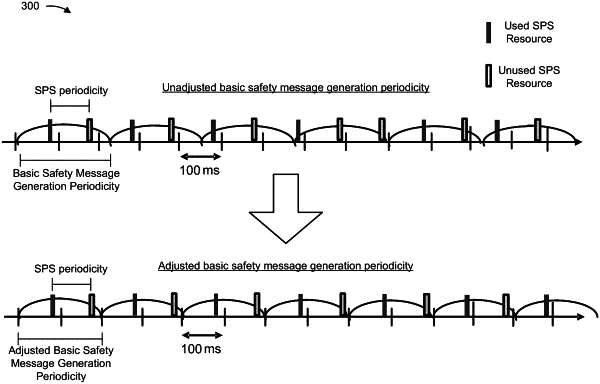| CPC H04W 72/53 (2023.01) [H04W 68/005 (2013.01); H04W 72/02 (2013.01); H04W 72/0446 (2013.01)] | 30 Claims |

|
1. A method of wireless communication performed by a user equipment (UE), comprising:
transmitting one or more first basic safety messages according to a semi-persistent scheduling (SPS) periodicity for transmitting basic safety messages, wherein the one or more first basic safety messages are generated according to a first basic safety message generating periodicity that is different from the SPS periodicity for transmitting basic safety messages;
adjusting, based at least in part on the SPS periodicity for transmitting basic safety messages, the first basic safety message generating periodicity to a second basic safety message generation periodicity; and
transmitting, based at least in part on the adjustment, one or more second basic safety messages according to the SPS periodicity, wherein the one or more second basic safety messages are generated according to the second basic safety message generation periodicity.
|